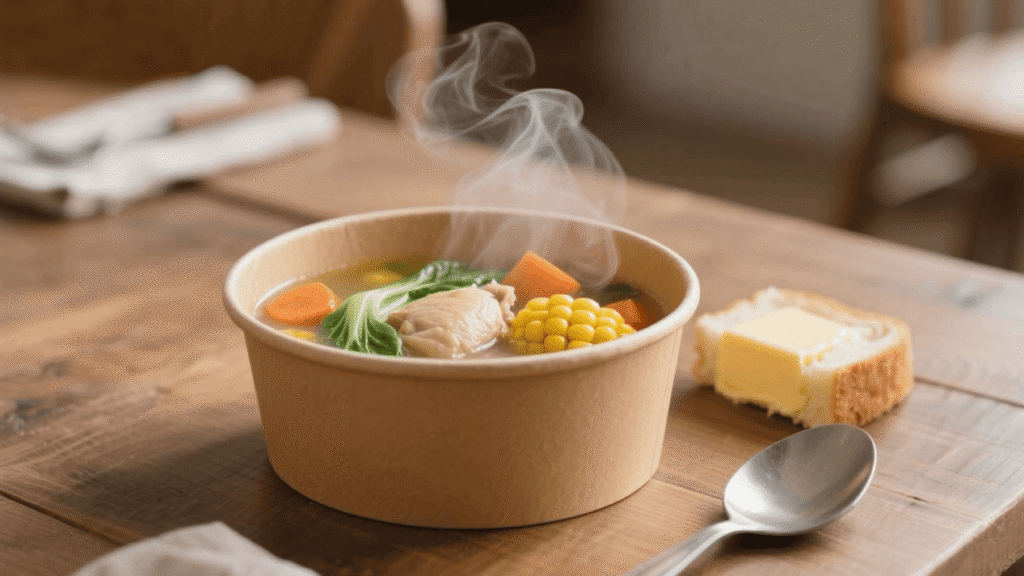Many people choose paper bowls thinking they are automatically eco-friendly, but not all paper bowls are made the same. The material and coating decide their environmental impact.
Soup paper bowls can be environmentally friendly if they are made from sustainably sourced paper with biodegradable or compostable coatings, and if they meet food safety standards1.
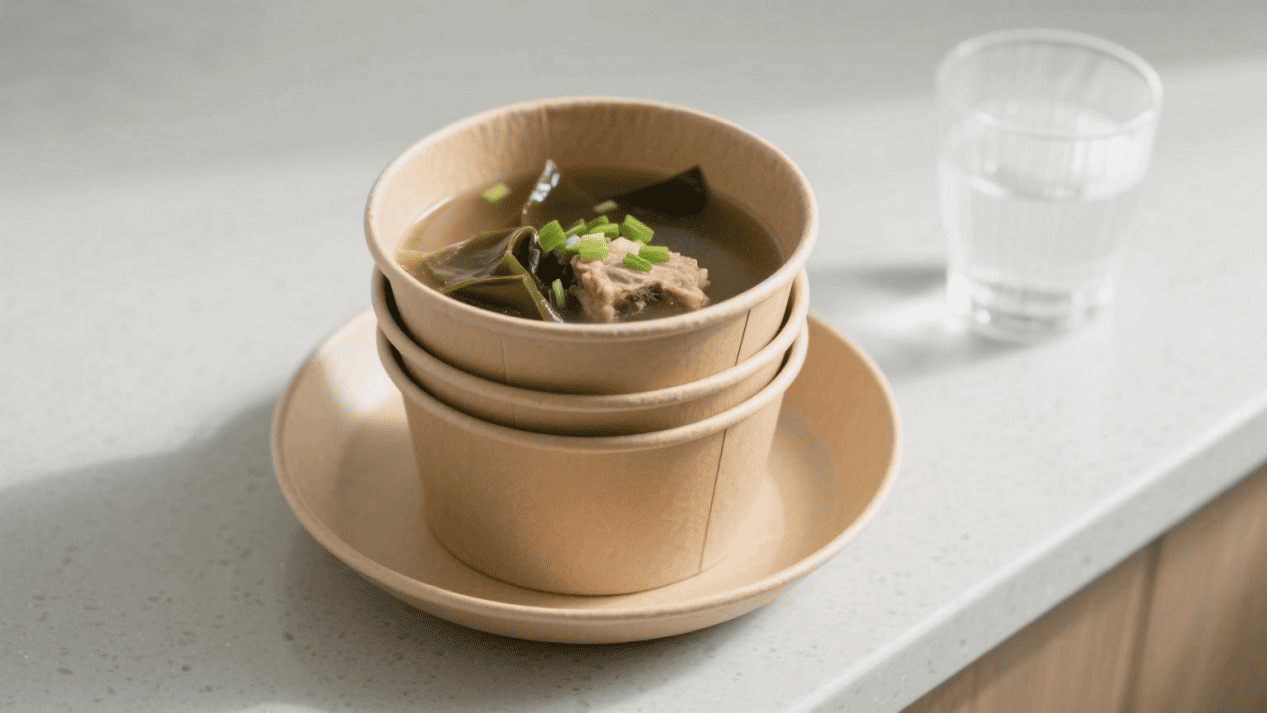
When I work with clients who run cafés or food delivery businesses, they often ask for “eco paper bowls” but are unsure what makes them truly sustainable. I always explain that it’s not only the paper but also the coating, inks, and supply chain that matter. A responsibly made bowl supports the environment without sacrificing food safety.
What is the safest material for soup bowls?
Many food business owners worry about chemical leaching from containers, especially with hot soups.
The safest soup bowl materials are food-grade paper from FSC-certified sources2 with coatings like PLA (plant-based) or high-quality PE approved for hot food use.
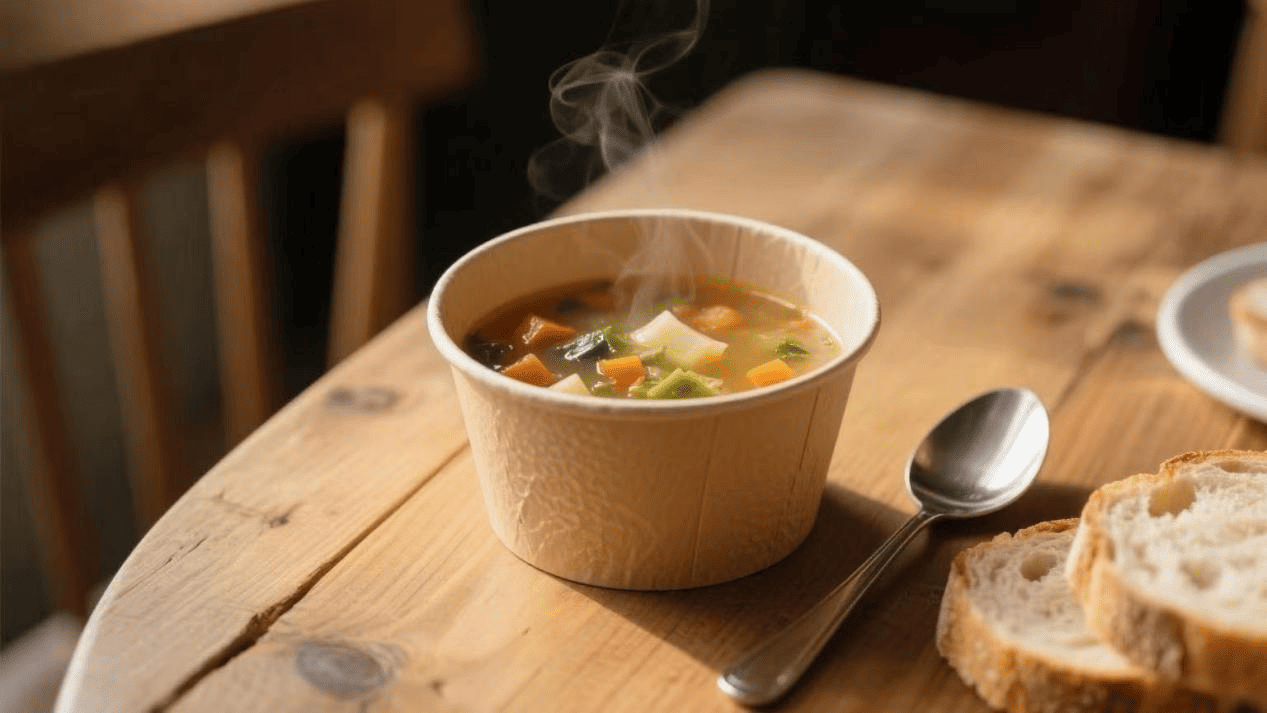
When I help clients choose soup bowls, we check three things: paper source certifications, coating type, and heat resistance. Here’s a breakdown:
| Material Option | Benefits | Weaknesses | Best Use Case |
|---|---|---|---|
| PLA-coated paper3 | Compostable, plant-based, heat-safe | More costly, needs industrial compost | Eco-conscious cafés |
| PE-coated paper4 | Affordable, strong, food-safe | Not compostable, limited recycling | Takeaway restaurants |
| No coating (rare) | Plastic-free, easy to recycle | Not leak-proof for soups | Dry food serving |
I remember working with an organic restaurant brand that switched to PLA-coated bowls. Their customers loved the “100% compostable” message, even though the cost was slightly higher.
Are paper food containers biodegradable?
A lot of customers assume “paper” means 100% biodegradable, but coatings can change this.
Paper food containers are biodegradable if they have no plastic or use bio-based coatings like PLA. Traditional PE-coated paper4 slows down biodegradation.
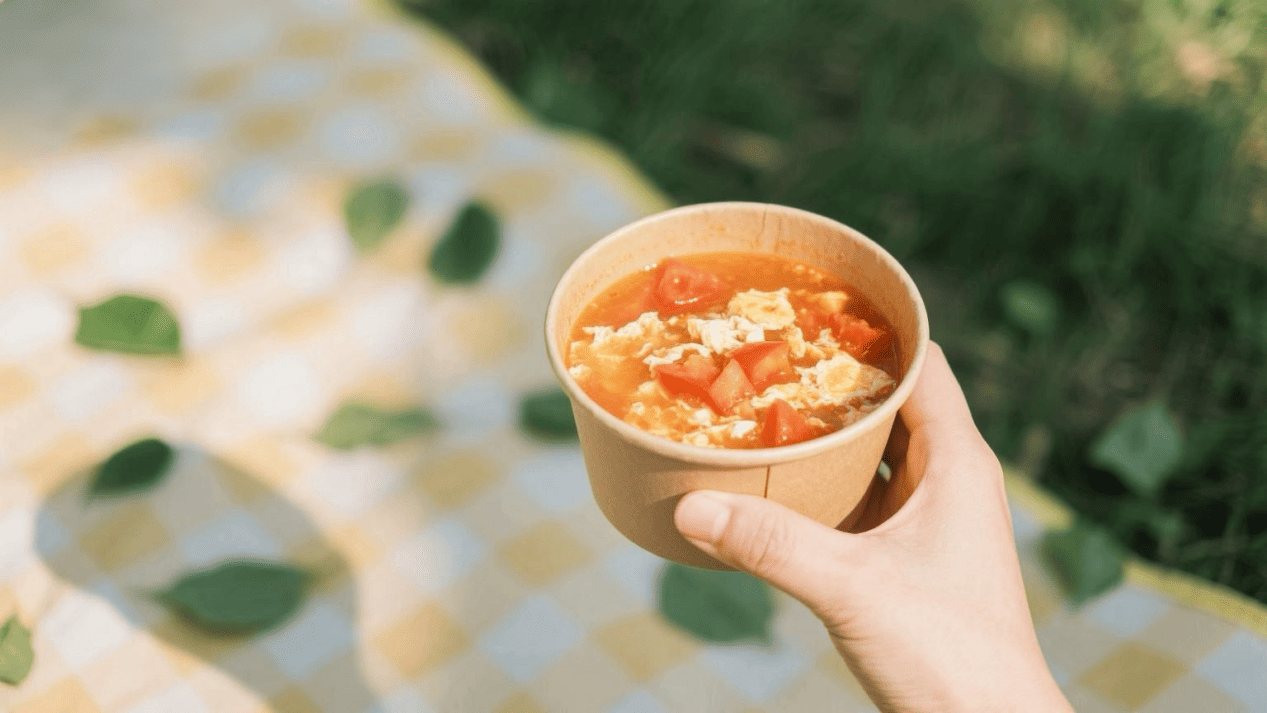
From my experience, pure paper without coating will break down quickly but cannot handle soup. That’s why most soup paper bowls5 need a lining. PLA lining biodegrades under composting conditions in a few months, while PE lining may take years.
| Coating Type | Biodegradation Time | Compostable? | Notes |
|---|---|---|---|
| None | Weeks to months | Yes | Not leak-proof |
| PLA | 3–6 months (industrial) | Yes | Composting facility required |
| PE | Decades | No | Strong but not eco-friendly |
I explain to buyers that the real eco benefit comes from matching use to disposal options. Choosing biodegradable bowls makes sense if composting is possible in their area.
Are paper soup containers recyclable?
Some customers believe all paper products can go into recycling bins, but liquid coatings complicate this.
Paper soup containers are recyclable only if the paper mills have technology to separate the coating from the paper fibers. PE-coated bowls are harder to recycle than plain paper.
<sup id=](https://papercupshkl.com/wp-content/uploads/2025/08/%E5%9B%BE%E7%89%8725.png) 6" title="[recyclable soup containers](https://papercupshkl.com/are-soup-paper-bowls-environmentally-friendly-2/)6" />
6" title="[recyclable soup containers](https://papercupshkl.com/are-soup-paper-bowls-environmentally-friendly-2/)6" />
I’ve seen cities with specialized recycling plants handle PE-coated paper4 products, but many still send them to landfill. PLA-coated bowls are compostable rather than recyclable, so they need a different waste stream.
| Container Type | Recyclable? | Special Processing Required? | Common Disposal Method |
|---|---|---|---|
| Plain paper | Yes | No | Paper recycling bin |
| PE-coated paper4 | Sometimes | Yes | Specialized recycling |
| PLA-coated paper3 | No | Composting facilities needed | Industrial composting |
When I supply bowls internationally, I check local waste systems before recommending materials. This ensures brands can actually follow through on their sustainability promise7.
What are biodegradable paper bowls made of?
Some brands advertise “biodegradable” without explaining what’s inside, which can mislead buyers.
Biodegradable paper bowls are made of FSC-certified paper and coated with plant-based materials8 like PLA or water-based barrier layers.
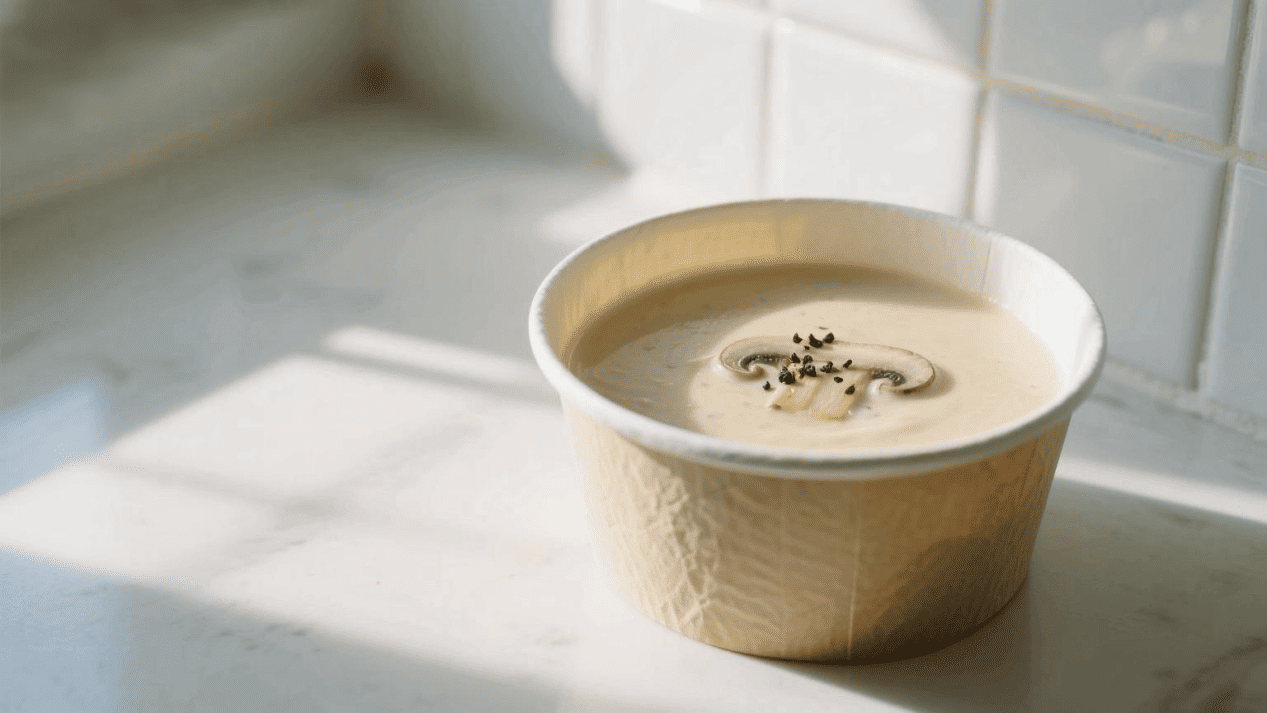
When I visited a PLA coating plant, I learned that the material comes from fermented plant starch, often from corn or sugarcane. This forms a thin, waterproof barrier inside the paper bowl. Here’s a composition breakdown:
| Component | Typical Material | Function |
|---|---|---|
| Paper base | FSC-certified virgin paper | Strength, structure |
| Coating | PLA or water-based resin | Leak-proofing |
| Printing ink | Food-safe soy ink | Branding, compliance |
A client of mine swapped to PLA-coated soup bowls last year. They reported better customer feedback and increased brand value, especially with eco-conscious buyers. For them, the change was both a marketing and environmental win.
Conclusion
Soup paper bowls can be environmentally friendly if chosen wisely, with safe, certified paper and biodegradable or compostable coatings that align with local waste management.
1.Understand the food safety standards that ensure safe use of paper bowls in food service. ↩
2.Discover the importance of FSC certification in ensuring sustainable paper sourcing. ↩
3.Find out how PLA-coated paper contributes to eco-friendly packaging solutions. ↩
4.Understand the implications of using PE-coated paper in food containers and its recyclability. ↩
5.Explore this link to understand the environmental impact of soup paper bowls and how to choose the right ones. ↩
6.Learn about the recyclability of soup containers and how to dispose of them properly. ↩
7.Find out how businesses can effectively uphold their sustainability promises in packaging. ↩
8.Explore the role of plant-based materials in creating sustainable food packaging options. ↩
